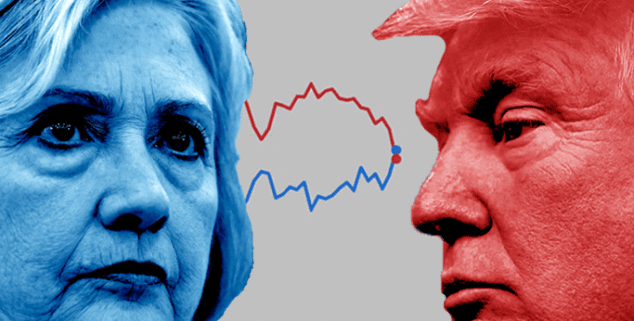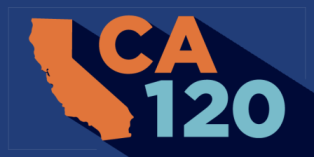Analysis
CA120: Nov. 8, through the looking glass
 (Illustration: Tim Foster, Capitol Weekly)
(Illustration: Tim Foster, Capitol Weekly)From neighbors to family members to local coffee shop baristas, the number one question I’ve received since Nov. 8 is, “How did that happen?”
Donald Trump’s come-from-behind win shocked about everyone in the political world. Even his own political team. 
Some had it right, but these were generally commentators without credibility who, like a broken clock, were bound to get one right eventually.
One claimed that Trump was going to win because there were more Trump Halloween masks sold. Another, a former university professor of mine, claimed that he predicted it using his model before the election even happened.
These were not thoughtful, data-driven predictions digging into the fundamental factors in U.S. elections: They were just guesses. Guesses that went against the common wisdom and lucked out.
From my vantage point, I see problems for people like me who work on a daily basis sampling the voter file to create the basis for campaign polls and modeling.
Some have pointed to the USC Dornsife/L.A. Times poll which consistently reported a Trump lead throughout the campaign. However, this survey was a popular-vote poll, not an Electoral College prediction. With Clinton winning the popular vote by 2.6 million votes, their survey ended up being the furthest off of all national polls.
So, aside from poking at who got it wrong, which was basically everyone (including me), the question still stands: How did this happen?
Our instinct is to point to one critical data point as a way of making sense of it all, but, this isn’t like the explosion of the Challenger where we are going to find the one faulty O-ring. The answer to this is multi-faceted and, in an election that was this close, might never be identified precisely.
The Clinton campaign has pointed to the letter from FBI Director James Comey regarding an extension of the email investigation, tying it to the salacious investigation of Anthony Weiner – a media firestorm that not only threw her campaign off message in the final two weeks before the election, but seemed to put some focus and momentum in to the Trump campaign.
There was also a complete shift in the way voters received information this election cycle.
From Russian-hacked emails creating a trickle of negative headlines for Clinton, to the proliferation of fake news on social media, and the shocking inability of news consumers to differentiate between actual facts from reputable media and nonsensical taunts and accusations in 140-character form.
From my vantage point, I see problems for people like me who work on a daily basis sampling the voter file to create the basis for campaign polls and modeling.
We won’t know the exact breakdown of who voted for a couple more months, but data managers who used information from the 2008 Obama-McCain contest and the 2012 Obama-Romney campaign as a foundation for forecasting this election cycle got things wrong in some key swing states.
Their reliance on past recent presidential elections, a good starting point in every previous presidential race, fell apart when the contest became a fight between a Democratic establishment and a new populist version of a Republican. The old data models failed to account for changes in voter enthusiasm among Latinos and African Americans in parts of the U.S., and potentially a resurgence of white, lower-education voters who sat out the two Obama elections.
Clinton’s loss of older, white, working-class voters, is the dominant takeaway for many who are looking for the failed O-ring theory of the Democratic loss. But this simple answer is possibly the worst.
The national polling will end up being acceptable: It ultimately showed a 3- to 4-point lead for Clinton, when she likely will end up having earned a 2-point “win” in the popular vote.
But the state-level polling, particularly in states that relied on these aforementioned voter subgroups of younger minority voters and lower-educated whites, was off by much more.
What was disastrous for the Clinton campaign was that it wasn’t just one poll that was wrong – the models for a few states all were based on the same faulty assumptions. So when one fell, similar voter groups and polling errors caused a correlated effect in several states with similar demographics.
And this leads us to the most persuasive argument for many: the crumbling of the Rust Belt Firewall that had been seen as an impregnable Electoral College defense for Democrats.
These voters had been seen as a safe bloc for Clinton, as they had been for Obama in 2012 and 2008. Yes, Ohio was tilting Republican and Pennsylvania was narrowing to a 3-point Clinton lead. But Michigan, with a strong urban vote in Detroit, was pegged by 538 as being an 80/20 Clinton advantage, while Wisconsin was an 84/16 probability for the Democrats.
And these states all flipped for Trump.
And this, specifically Clinton’s loss of older, white, working-class voters, is the dominant takeaway for many who are looking for the failed O-ring theory of the Democratic loss. Every other explanation has been shifting to the sidelines as this white industrial worker theme has taken over.
But this simple answer is possibly the worst. Not only are there a litany of other things that might be more responsible for costing Clinton the election, this answer could push Democrats down a rabbit hole, harming their chances to rebuild their party from this highest of high-profile defeats.
In the post-1994 environment, Democrats could have recalibrated their message and the party as a whole to cater to this population, focusing on the economic distress of some voters that apparently had metastasized into an anti-immigrant wave.
The 1994 re-election of Pete Wilson as California governor serves as a great example for the National Democratic Party moving forward.
Like Trump, Wilson caught a wave of anti-immigrant sentiment in that election year, led by Proposition 187, to make non-citizens ineligible for state benefits. And, like Trump, he was able to pick up counties in this contest that had been won by Democrats just four years prior.
Major Democratic counties, like Los Angeles, Contra Costa and Santa Clara, all shifted Republican in his race against Kathleen Brown, despite having voted for Dianne Feinstein against Wilson in 1990. (Yes, East Coast readers, Kathleen Brown is the sister of current Gov. Jerry Brown and, at the time, she was running to become California’s first female governor.)
Exit polling and an analysis by the Field Poll showed that the shift for Wilson in 1994 was driven by a strong Republican performance, a small advantage among independent voters, and a tilt of some white, male, working-class Democrats to the Republican candidate, with a correlation to votes for the anti-immigrant Proposition 187.
In the post-1994 environment, Democrats could have recalibrated their message and the party as a whole to cater to this population, focusing on the economic distress of some voters that apparently had metastasized into an anti-immigrant wave under the banner of “economic anxiety.”
And some within the Democratic Party did try to push the party on this path – slowing measures to legalize gay marriage because it would be polarizing, opposing tax increases and forming the basis of the current business-friendly Mod Caucus in the legislature.
What has happened in California shows the potential for a trap for Democrats nationally as they look to recover from this year.
But other elements pushed the Democratic Party in a different direction – growing the strength of the progressive wing, and reaching out to African Americans, Latinos and Millennials.
This wing pushed issues like AB540, California’s first bill extending higher education opportunity to non-citizens and serving as a precursor to the national Dream Act, they pushed for legalization of gay marriage and benefits for same-sex couples, championed clean air and renewable energy. And these elements are now reflected in the positions of current Assembly Speaker Anthony Rendon, Senate Leader Kevin DeLeon, and California Democratic Party Chairman John Burton, a former state Senate leader and liberal firebrand.
But the more moderate elements in the Democratic Party post-1994 are still remarkably relevant. In fact, they may hold the keys to many policy debates in the California Legislature for the rest of the decade, or longer. They are also an important bridge for Democrats to the business community, conservative rural Democratic voters and suburban voters.
However, the growth of the Democratic caucus from a bare majority in the mid-1990s to a 2/3 supermajority 20 years later, has come from the progressive growth.
What has happened in California shows the potential for a trap for Democrats nationally as they look to recover from this year.
With a record number of Republican-held state Legislatures, governors, overwhelming House majorities and control of the U.S. Senate (which, ironically, might have stemmed from an expectation that Clinton was going to be President, necessitating a counter-balance in the legislative branch of government), the Democratic party is rightfully entering a period of reconstruction.
Yet, in 2016 Republicans were able to win big time while throwing this entire plan (Growth and Opportunity Project) out the window.
Will they rebuild their Party based on the dominating theme of the election – the loss of Rust Belt industrial white working class voters? Or will they incorporate appeals to these voters within a larger vision for building from the growing portions of the electorate? Those include voters and current non-voters who are younger, more diverse and struggling to find a home either party right now.
A similar challenge is facing the Republican Party.
After their 2012 defeat, Republican Party leadership created a thoughtful plan for returning to the executive branch through active outreach to younger and more diverse Americans. The “Growth and Opportunity Project” called for a new style of Republican message that showed caring for an American that “looks different” than it did in the prior century.
It sought inclusion of Latinos, Asians and African Americans, messaging that emphasized tolerance and respect. In one summary it wrote, “The pervasive mentality of writing off blocks of states or demographic votes for the Republican Party must be completely forgotten. The Republican Party must compete on every playing field.”
Yet, in 2016 Republicans were able to win big time while throwing this entire plan out the window. Success was found in a presidential campaign that seemed to go into the opposite direction, exciting base supporters, and then building on that with populist appeals from a unique – never seen before in this country – candidate.
But, the America described in the Growth and Opportunity Project is still out there, and still changing in the ways that were foreseen after the 2012 loss.
The risk for Republicans is that this short term success, even if it carries them through this presidential term, and possibly the next, will be forestalling their adjustment to the realities of where the country is headed demographically.
They could find themselves in 2024 without a Trump-like populist, television celebrity, larger-than-life figurehead, and 11 years down the road from their plan for rebuilding the party around messages, outreach and strategies which ensure a stronger Republican party in the years to come.
—
Ed’s Note: Paul Mitchell, a regular contributor to Capitol Weekly, is the founder of the CA120 column and the vice president of Political Data, Inc., which markets campaign information to campaigns in both major parties.
Want to see more stories like this? Sign up for The Roundup, the free daily newsletter about California politics from the editors of Capitol Weekly. Stay up to date on the news you need to know.
Sign up below, then look for a confirmation email in your inbox.

A thoughtful, insightful analysis and comment. Unfortunately, though the president-elect appears to be an anomaly, he may be the portent of “things to come.”